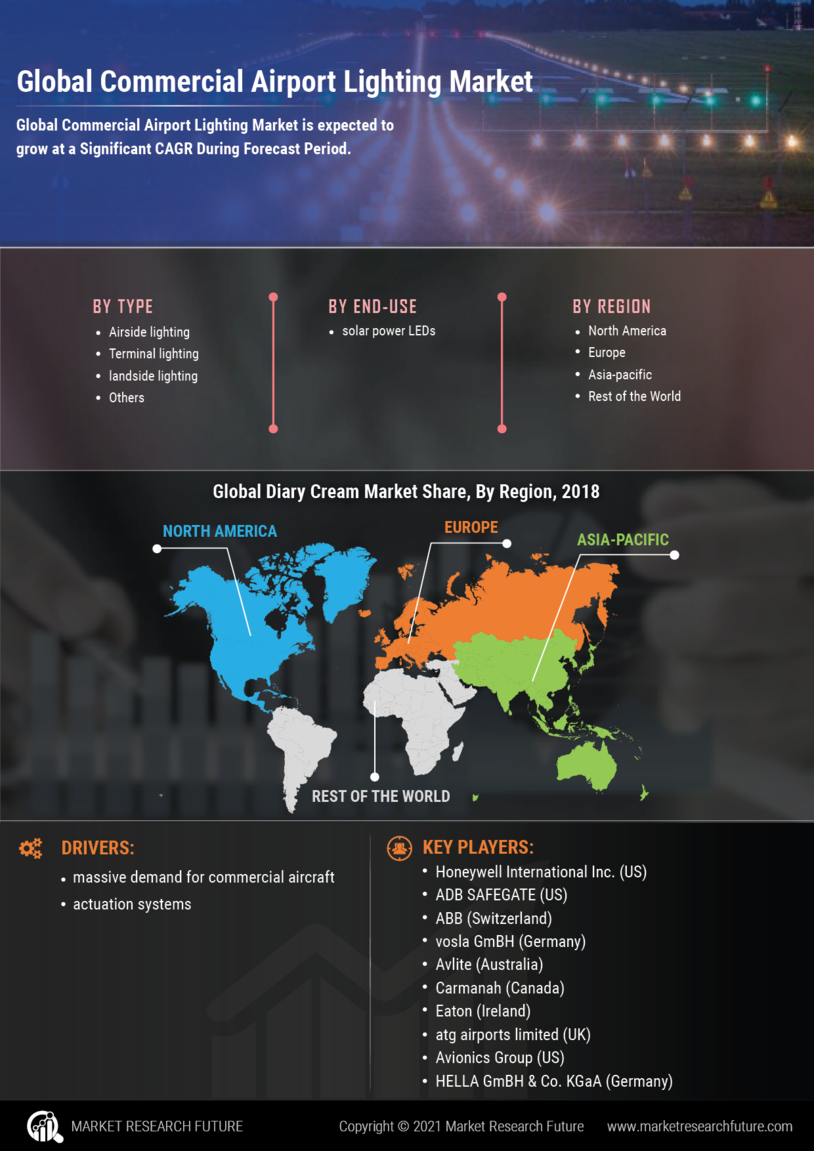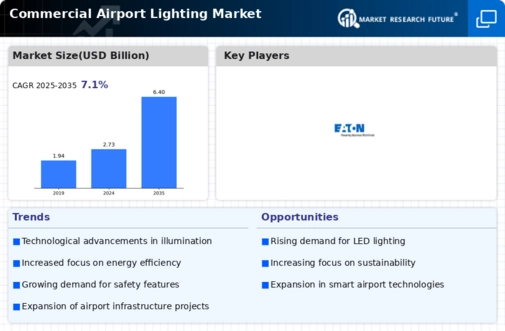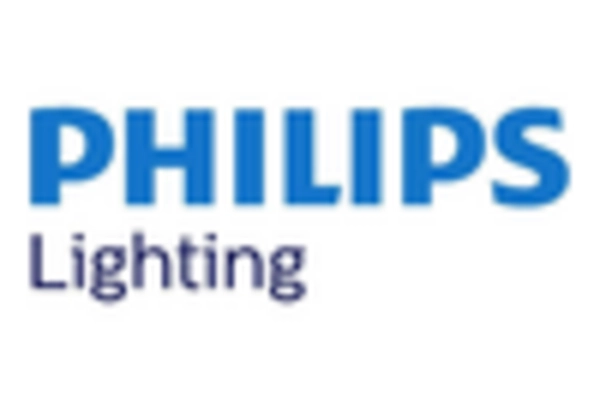Increased Air Traffic
The increase in global air traffic is a significant driver for the Global Commercial Airport Lighting Industry. As more passengers travel by air, airports are compelled to expand and enhance their facilities, including lighting systems. According to forecasts, global air traffic is expected to double by 2035, necessitating upgrades to existing lighting infrastructure to accommodate larger aircraft and increased flight frequencies. This growing demand for efficient and reliable lighting solutions is likely to contribute to the market's expansion, with a projected growth from 2.73 USD Billion in 2024 to 6.4 USD Billion by 2035.
Regulatory Compliance
Regulatory compliance plays a pivotal role in shaping the Global Commercial Airport Lighting Industry. Governments worldwide are implementing stringent regulations to enhance safety and environmental sustainability in airport operations. For example, the International Civil Aviation Organization (ICAO) has established guidelines for airport lighting that must be adhered to by member states. This regulatory framework compels airports to upgrade their lighting systems, thereby driving demand for advanced lighting solutions. As compliance becomes increasingly mandatory, the market is likely to witness significant growth, aligning with the projected increase in market value from 2.73 USD Billion in 2024 to 6.4 USD Billion by 2035.
Market Growth Projections
The Global Commercial Airport Lighting Industry is poised for substantial growth, with projections indicating an increase from 2.73 USD Billion in 2024 to 6.4 USD Billion by 2035. This growth trajectory reflects a compound annual growth rate (CAGR) of 8.05% from 2025 to 2035. Factors contributing to this expansion include advancements in technology, regulatory compliance, safety enhancements, sustainability initiatives, and increased air traffic. The convergence of these elements suggests a robust market environment, where investments in innovative lighting solutions are likely to flourish.
Sustainability Initiatives
Sustainability initiatives are increasingly influencing the Global Commercial Airport Lighting Industry. Airports are under pressure to reduce their carbon footprints and implement eco-friendly practices. The adoption of energy-efficient lighting solutions, such as solar-powered systems, is becoming more prevalent. For example, several airports have begun utilizing solar runway lights, which not only reduce energy costs but also contribute to sustainability goals. This shift towards greener technologies is likely to propel market growth, with projections indicating an increase from 2.73 USD Billion in 2024 to 6.4 USD Billion by 2035, driven by a CAGR of 8.05% from 2025 to 2035.
Technological Advancements
The Global Commercial Airport Lighting Industry is experiencing a surge in technological advancements, particularly in LED lighting systems. These systems are not only energy-efficient but also offer enhanced visibility and safety for aircraft operations. For instance, the transition to LED lighting can reduce energy consumption by up to 50%, which is crucial for airports aiming to lower operational costs. As airports increasingly adopt these technologies, the market is projected to grow from 2.73 USD Billion in 2024 to 6.4 USD Billion by 2035, reflecting a robust CAGR of 8.05% from 2025 to 2035.
Safety and Security Enhancements
Safety and security enhancements are paramount in the Global Commercial Airport Lighting Industry. Airports are investing in advanced lighting systems to improve visibility during night operations and adverse weather conditions. For instance, the installation of high-intensity runway lights has been shown to reduce the risk of accidents significantly. Furthermore, the integration of smart lighting systems that adapt to environmental changes is gaining traction. This focus on safety not only enhances operational efficiency but also aligns with the projected market growth, as the industry is expected to expand from 2.73 USD Billion in 2024 to 6.4 USD Billion by 2035.

















Leave a Comment